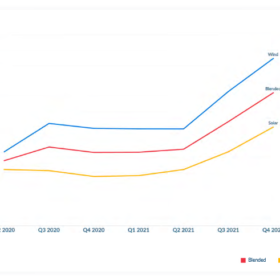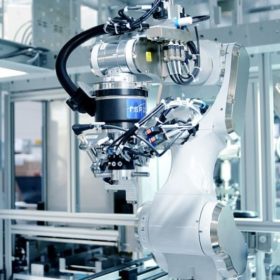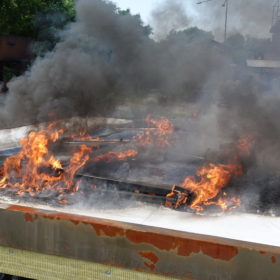Monolithic fuel cell with power density of 5.6kW/L
An international research group has developed a solid oxide fuel cell that may be used in vehicles. The monolith device has an active cell area of around 18 cm2 and was built through common manufacturing processes. It was found to achieve a high power density of 5.6 kW/L, which the scientists said is comparable with that of the best performing fuel cells based on ceramic anodes.
The Hydrogen Stream: Hydrogen-powered trains for the German network
Elsewhere, the Danish government announced a plan to deploy up to 6 GW of electrolyzer capacity by 2030 and Germany and Norway agreed to conduct a feasibility study on large-scale hydrogen transport, including via pipeline.
New solar tiles from Denmark
Danish BIPV specialist Dansk Solenergi has added two more tiles to its product range – an 18.15%-efficient dark grey panel and a 16.7%-efficient terracotta product. Both panels have an operating temperature coefficient of -0.34% per degree Celsius.
Unsubsidized utility scale solar changing shape of Danish PV market
In a short interview with pv magazine, Flemming Vejby Kristensen, from the Danish PV association Solcelleforening, explained the surprising performance achieved by Denmark’s PV market in 2021, in which around 667.6MW of PV capacity was deployed. Around 94% of this growth is coming from large scale unsubsidized solar projects and the segment’s main driver has been the willingness of big corporations to buy green electricity under bilateral PPAs.
Chint to supply modules for 329MW of Danish solar
The Chinese solar module manufacturer and its German EPC partner Intec have landed a contract to develop BeGreen’s Danish solar portfolio.
Storing solar power with grid-scale molten hydroxide
Seaborg Technologies, a Danish manufacturer of molten salt nuclear reactors, has turned a technology that was originally developed for nuclear power into a large-scale storage solution for wind and solar. It has developed a storage system that uses renewable energy to heat salt with electrical heaters, based on two-tank molten salt storage designs developed for concentrated solar power plants.
Solar the fastest growing European clean power source
The latest numbers released by EU data body Eurostat indicate renewables, including hydropower, contributed 37% of Europe’s gross electricity consumption in 2020, up from 34% a year earlier.
Energy crisis drives up European clean power PPA prices
A worsening price shock, felt to different degrees across Europe, has now seen renewable power purchase agreement tariffs climb for three consecutive quarters. Despite that, however, developers and energy buyers are still signing contracts, with non-standard agreements on the rise, according to renewable transaction infrastructure provider LevelTen Energy.
The Hydrogen Stream: Australia approves $150 million hydrogen promotion program, Mitsubishi developing ammonia combustion burner in Japan
In other news, Oil India is setting up a 100 kW green hydrogen production facility in Assam, while the German government is providing €60 million for a project aimed at preparing electrolyzer technologies for industrial production at gigawatt scale.
New tool to understand component failure rate in PV-related fires
Scientists have developed a new model based on fault tree analysis to evaluate the frequency of fires caused by rooftop PV systems and assess system safety and reliability. They claim that the new tool has the potential to identify fault linkages in systems, highlight failure patterns before they arise, and compare multiple designs for safety.










